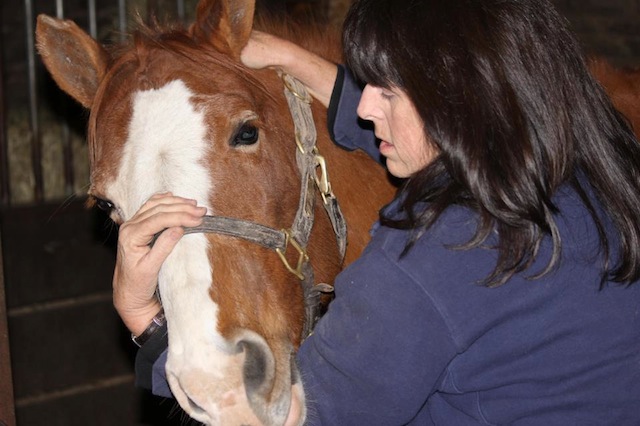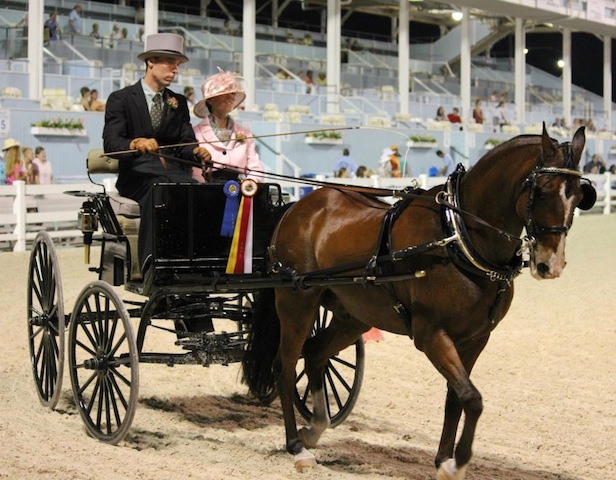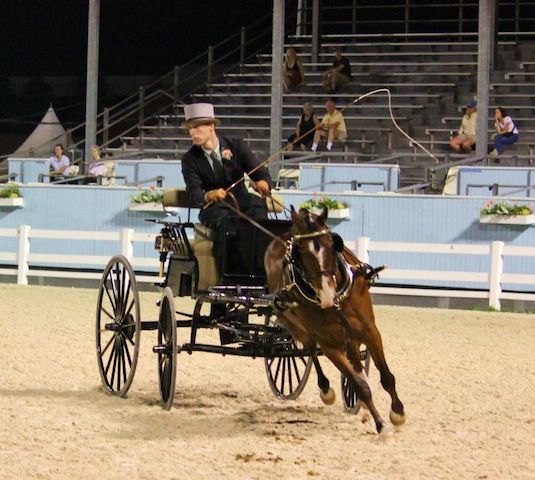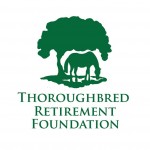As beneficial as professional massage is to the tight muscles of a hardworking athlete, so it is for releasing tension and easing the aches and pains of a 1,200- pound sport horse, says bodywork practitioner Cyndi Hill.
The longtime horseman has limbered up racehorses and sport horses for years through a non-invasive approach aimed at relieving tensions in muscle and connective tissue.
In this week’s Clubhouse Q&A, Hill describes how she transforms a wired equine into a yawning, eyes-rolling-backward Gumby.
Q: Cyndi, please tell me about the work you do as part of your practice, Synergy Equine Bodywork?
Synergy bodywork is a gentle, non-invasive, multi-discipline approach to maximizing the horse’s performance, both physically and mentally. It integrates theory and techniques drawn from a variety of hands-on modalities, within a framework of biomechanics and neuromuscular processing. Tension patterns in muscles and connective tissue can create restrictions, affecting not only physical performance, but also contributing to “behavioral” issues. Bodywork allows the horse to relieve tension, release restrictions, and eliminate the anticipation of discomfort.
It is important to understand that bodywork is about maximizing the horse’s potential. It is not a substitute for veterinary care, and is not intended to diagnose or treat disease or medical issues.
Q: What common physical issues can you detect and alleviate through your work?
Inability to pick up or maintain the correct lead, ”falling in” through the turns, difficulty engaging the hindquarters, resistance to the bit, restricted flexion at the poll, a “cold” back, elevated head carriage, restricted lateral flexibility—these are just some of the issues that can be addressed with bodywork.
So much is related to tension at the jaw and poll. Tension in the jaw is transferred to the rest of the body by muscles running from the lower jaw to the sternum and from the upper jaw to the poll and neck.
Tension at the poll extends down the neck, and can affect movement of the shoulder and forelimbs, cause hollowing of the back, and create difficulty engaging the hind legs.
It can be amazing to see the effect throughout the body as the restrictions in these areas are released.
In addition, many physical issues are the result of compensatory adjustments made by the horse. Horses are masters of compensation. They compensate for small (and sometimes large) injuries, asymmetries, and muscular aches and pains by shifting their balance, altering their movement patterns, and reducing the brain’s focus on the “problem area” before the owner or trainer even realizes there was an issue.
These changes create their own stresses on the body, which they again compensate for. This “compensation loop” may be repeated several times before less subtle issues surface.
Q: What comprises a standard session?
Each session is tailored to the individual needs of the horse, and is an interactive process. I always spend a few minutes just focusing on the horse and establishing a connection.
A short, hands-on evaluation, focusing on the horse’s subtle body language and responses to touch, can identify areas of sensitivity, tension, and restriction, as well as give me an idea of the horse’s anxiety level, stoicism or hypersensitivity.
During a session, I am continuously evaluating the subtle, and not-so-subtle, responses from the horse, and adjusting my pace and touch accordingly.
If the horse needs a few minutes to “process” the neuromuscular changes that are taking place, I wait until we are ready to move on. Depending on the horse’s needs, I usually start with acupressure for calming and general tension release.
I like to work with the horse’s tongue to facilitate the release of tight jaw muscles and follow with focused release around the jaw and poll.
As restrictions in the poll and neck are released, we work on increasing flexibility in those areas. Tight chest and shoulder muscles are released, as well as improving the quality and range of motion in the shoulders.
Tightness and restrictions through the back, ribs, lumbo-sacral junction, and tail are released and we work on suppleness from shoulder to pelvis. Tight gluteal, hamstring and thigh muscles are released. Flexibility work addresses range of motion in the hips, stifles, and hocks. The amount of time I spend working with any one area, and the specific techniques used will vary based on the horse’s responses.
Q: How often should a horse receive bodywork?
It depends on the horse’s issues.
In some cases, when I work with a horse for the first time, there are “layers” of issues, and not all of the layers can be resolved at once. In those cases, I might recommend sessions two weeks apart until we have resolved the major issues, and are able to transition to a less frequent maintenance schedule.
It also depends on the horse’s training and competition schedule.
Generally, the heavier the training and competition schedule, the more frequent the need for bodywork.
For some thoroughbred racehorses, once a week plus a “tune up” before a race could be ideal. In other performance disciplines, monthly could be fine, but consistency is important. Ideally, if you schedule bodywork on a regular basis during training, your horse should be training in comfort and at maximum performance.
A short “tune up” just prior to competition usually works fine. If you schedule bodywork only for a competition, or only when you have a problem, your horse is probably not training at 100% and is creating compensatory issues which may be more difficult to address.
And it also depends on the owner’s involvement. Many owners become an integral part of the process. They become adept at noticing subtle differences in movement and balance, slight under performance, and subtle changes in attitude.
They want to know what they can do between bodywork sessions or when an issue arises. I love helping my clients learn simple techniques they can use to prevent problems or release tension in their horses.
Q: What is your background with horses, and how did you get your start in this line of work?
Horses have always been my passion, although I was a “horse crazy” kid in a non-horsey family.
As an adult horse owner for over 20 years, and the owner of an OTTB, I became interested in the concept of equine bodywork and its implications for performance and behavioral issues. Ten years ago, after a long career as a systems analyst, I decided to pursue my passion full time.
For several years, I worked mostly with Thoroughbred racehorses at Monmouth Park, as a Certified Equine Sports Massage Therapist and a Masterson Method Certified Practitioner.
My experiences at the track fueled my interest in equine biomechanics and exercise physiology and led me to complete Equine Science courses in anatomy, exercise physiology, nutrition and behavior through the University of Guelph.
As I transitioned from the racetrack to working mostly with Eventing, Dressage and Combined Driving competitors over the past several years, I have remained committed to helping Thoroughbreds.







Cyndi has worked on my dressage horse on several occasions and I can’t praise her work enough. My mare, Flower, had difficulty cantering to the right and would buck. Cyndi takes alot of time to get to the root of the problem. After a few sessions the issue was resolved. Cyndi returns occasionally to give Flower a tune-up.
Massages do a body good!
If anyone remembers Cam. The OTTB who came to Bermuda. Well he has a. certified equine massage therapist come out to see him weekly. Once we had him in work we found he wasnt moving as well as his confermation said he should. As I had seen him float across the school shortly after ariving in Bermuda I knew there was something wrong. We first had the vet out to him to look for obvious and not so obvious things from thee he sugested a friend who did equine massage. After having Kelly out she was able tp gi e us abetter idea of what was going on with his body. Cam was so tight in his front end that she was doing him Twice aWeek for about three months . She still does him every week tbough she has said he could proberly get do e everyother week with out any side effects. But now Im so use to her updates on his body that I dont see the poimt on stoping it. He is much stronger and has a completly diferent body shape. from all thoes months ago. And even though we are diligent to make sure he has the right fittin tack Kelly can tell me much faster if. we need to change something. He doesnt have to go through. a few days of sore shoupder or withers brofe its noticed . ( He is ridden by two kids under 12 who would proberly not be able to feel a sudden sutle change likethat). Also when ever his training changes. i.e from dressage to jumping or gallops fpr the hunts she right there to ease any soreness that he might have. Just lile whaen we go to the gym and work on a new muscle group. Haveing her come out weekly helps us know that he wont be comesating. for a soreness and hurting something esle
Hello,
I am in Florida. I have a great passion for my horses as well.
I have one thoroughbred 3 year old, ready to race, who could use an evaluation, and probably some therapy.
I am not sure where you work; if you do not work in Florida, do you have a connections here that also do this kind of work?
Thank you for listening,
Sharon Hodges